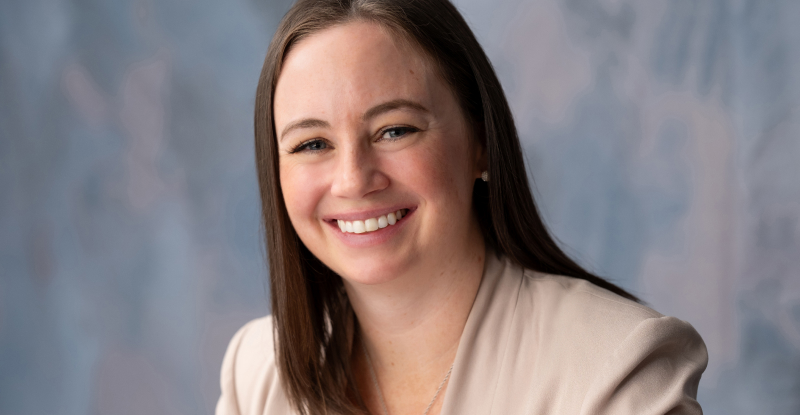
Competing in an increasingly changeable and technologically advanced world is no easy task, particularly with labour in short supply. It requires innovation and adaptability. Awareness of this need is informing many initiatives in the CPA profession including the work currently being done to update the CPA program.
A main topic of discussion during the CPABC Leadership Update virtual sessions in October 2022 was how to ensure the ongoing attractiveness of the CPA profession while continuing to fulfil the profession’s mandate to protect the public. This article takes the discussion a step further, diving into the research to examine how the profession is adapting to the changing landscapes of both the labour market and the education sector to maintain the health of the CPA pipeline.
A changing labour market
The findings of CPABC’s 2022 BC Check-Up: Work report, summarized in our November/December 2022 issue, tell the story of a strong but tight labour market—one that faces ongoing labour shortages.1 This was echoed in the results of the corresponding survey, with 87% of respondents identifying the ability to attract and retain skilled labour as a major constraint on business success in 2022.2
To better understand the market for CPAs, CPABC commissioned a labour market study by Deloitte in August 2022. The CPA Recruitment Needs Study, last conducted in 2019, uses economic modelling to project the demand for and supply of CPAs over the next five years.3 According to the 2022 study, which is summarized in "CPA Supply and Demand: What's the Forecast in BC?", the demand for CPAs remains high, and it’s projected to increase by 1.3% annually, on average, through 2027.
Over the same period, the supply of CPAs is expected to grow at an average annual rate of 2.2%, creating a small surplus of CPAs from 2025 onwards. Still, this estimated surplus is expected to remain below 2% of total supply by 2027, keeping the labour market for CPAs very tight and hiring challenges ongoing. Given the length of time it takes for individuals to become certified, increasing the recruitment of new candidates would not alleviate these challenges over the short term.4
A look at enrolment
The long-term health of the CPA pipeline relies on the profession’s ability to continue attracting qualified candidates.
To better understand enrolment trends in the CPA program, CPABC participated in a national survey of nearly 20,000 college and university students across Canada, which is conducted annually to gather business students’ thoughts on career choices. In 2022, the survey identified the following as the top three career goals for accounting and non-accounting business students in BC: 1) balancing work life with personal life (64%), 2) maximizing income (49%), and 3) achieving secure employment (34%).5
While they shared similar goals with their peers in non-accounting business streams, BC’s accounting students were marginally more confident that their field of study would lead to a good job (78% versus 77%). A vast majority of these accounting students (88%) said they were aware of the CPA designation, and 68% among them said they were likely to pursue it. Another 9% said they were already doing so.6
CPABC also commissioned brand research in 2022 to survey CPA prospects in the following subgroups: high school students, post-secondary students, recent post-secondary graduates, and people in the workforce who are not CPAs and graduated from post-secondary institutions more than two years ago.7 The results of the survey show that overall awareness of the CPA program remained consistent between 2021 and 2022, with the designation continuing to rank among the top credentials considered by prospects. Additionally, consideration of and the intent to pursue the CPA designation increased between 2021 and 2022, largely due to a strong result from respondents in the “recent graduates” subgroup.
Among the other key findings, awareness of the CPA program was found to be lower among high school and post-secondary students, giving CPABC a clear target for continued awareness-raising efforts.
The survey also sought to better understand the factors that most influence a prospect’s decision to enrol in certain credentialing programs. Those most likely to consider pursuing a credential said they want specific, meaningful, secure, and high-paying careers. Respondents identified access to career paths, increased job security, and above-average salaries among the top strengths of the CPA designation, but the results showed room for increasing awareness in the area of meaningful work.
Notably, flexibility was one of the attributes least associated with the designation, and respondents also identified the length and timing of the CPA program, as well as its entry requirements, as potential barriers.
New expectations
The profession is also paying attention to broader trends in the field of education—particularly in terms of student expectations. As noted in a recent report by Deloitte, Canadian post-secondary institutions are not only facing rapid technological change and growing competition for enrolments and government funding—they’re also grappling with an increasingly dissatisfied student population.
The firm notes that students today have complex needs and heightened expectations and advises that engaging and supporting them will require shifting from an “institution-centric” paradigm to a “student-centric” one.8
Similarly, a recent KPMG poll found that today’s students expect educational institutions to adapt to their shifting priorities.9 It identified the following as the top four drivers that influence student experience, aside from lower tuition costs:
- An environment (physical or virtual) that is conducive to learning;
- Digital access to information (both in terms of learning and interaction with the institution);
- A learning experience that is personalized to the student’s learning style; and
- An institution that genuinely engages with the student and builds a lifelong relationship with them.
The firm connected these expectations to the fact that we are now living in what has been dubbed the “age of the customer,” where personalization is paramount.10 In such an age, the traditional one-size-fits-all educational model for students in higher education—particularly in business and accounting—does not cut it. As noted by KPMG, educational institutions must now shift their focus to the student experience.11
Education 2.0
Thousands of aspiring CPAs have progressed through the CPA Professional Education Program since its launch in 2013, and they’ve emerged with a solid foundation of competencies that has prepared them well for rewarding careers as CPAs. In reimagining the program, the profession is seeking to build on its existing strengths to address the realities of a rapidly changing world.
Work on the CPA program is comprised of two major projects: Competency 2.0 and Certification 2.0. The first project was finalized and approved by all provincial and territorial boards in 2022, following a two-year process that involved extensive consultation with more than 3,100 employers, educators, candidates, and CPA members across the country. Competency Map 2.0 (CM 2.0) reflects the rapidly changing environment in which CPAs operate—one increasingly influenced by data governance, artificial intelligence, machine learning, and automation.
CM 2.0 is less prescriptive than its predecessor and focuses on principles-based competencies, as opposed to traditional knowledge-based competencies. Through “action learning,” it seeks to equip candidates with the kind of agility, resilience, adaptability, and innovation needed by the CPA of the future.
“Action learning involves real-time/real-world problem-solving in a group setting, and it’s coupled with a reflection period that enables candidates to identify lessons learned,” says Lara Greguric, FCPA, FCA, chair of the Certification 2.0 Steering Committee. “These kind of learning experiences are more aligned with how we operate in the workplace.”
To explain the scope of this shift, Greguric points to the “Education 4.0” framework developed by the World Economic Forum in 2020.12
“The WEF created this framework to reimagine education and prepare students for the future,” she explains. “Essentially, it calls for a shift from process-based learning to project/problem-based learning, which requires peer collaboration. It more closely mirrors the future of work.”
Another global trend tied to the future of work is the use of technology to aid learning. According to the World Economic Forum, educational technology or “edtech” is projected to attract more than $400 billion of capital globally by 2025.13
“The use of edtech has accelerated rapidly during the pandemic,” says Greguric. “In some sectors, we’re seeing developments like AI-powered marking of open-ended assignments and bots that provide mentoring and feedback to students. Going forward, the CPA profession needs to keep considering how technology can aid learning and improve the learner experience. For example, we know that augmented and virtual reality can provide students with immersive and experiential learning opportunities.”
Despite its future focus, however, CM 2.0 is grounded in the same critical thinking, analytical skills, and ethical mindset for which the CPA profession is already known, and the competency map’s guiding principles recognize that the profession must stay aligned with the global accounting community by continuing to meet the education, examination, and practical experience standards set out for entry-level accountants by the International Federation of Accountants.
To that end, CM 2.0 has been designed to ensure that all newly certified CPAs have an underlying body of knowledge called the “Foundational Common Core.” This foundation consists of three areas of study: 1) sub-foundational (general and emerging aspects of the global environment in which CPAs work); 2) foundational (topics related to business, government, and other organizations); and 3) specific (professional accounting).14
As is currently the case, aspiring CPAs will have the option of completing the necessary requirements for licensure (the ability to practise public accounting) concurrent to or after the point of certification. Which brings us to the second project, the goal of which is to translate CM 2.0 into a modernized certification model that encompasses education, experiential learning, and assessment. The research, design, and development phase of Certification 2.0 (Cert 2.0) began in June 2022, and the project is expected to continue into 2025.
“This is a major undertaking,” says Greguric. “At its most granular level, Cert 2.0 will outline where, when, and how the CM 2.0 skills and competencies will be learned and assessed. However, it goes beyond just implementing the profession’s new competency map. It also provides us with an opportunity to develop an innovative certification program that protects the public and meets the diverse and evolving needs of learners, the market, and governments.”
There are five principles guiding the project. Cert 2.0 is being designed to:
- Protect the public by preparing learners to be competent and ethical CPAs, and serve the public interest by developing CPAs who contribute to social and economic development.
- Prioritize the learner and their unique needs.
- Be relevant and attractive to the market.
- Stay flexible and adaptable, so that it can readily respond to the changing environment.
- Challenge the status quo and embrace digital transformation and emerging trends.
Underpinning these principles is a commitment to continue engaging with stakeholders throughout the project.
“We know we could do a better job of ensuring that all components of the CPA certification model are well integrated,” says Greguric. “For example, learners have told us they’re not necessarily seeing the linkages between practical experience, which currently has its own separate competency map, and the rest of the certification model. We have the opportunity now to better integrate experiential learning into the model and solidify learning.”
In addition to the educational trends already cited, another development on the profession’s radar is the concept of micro-credentials, which recognize targeted learning for specific skills and competencies over shorter periods.
“This is a promising development that could increase accessibility and flexibility for learners,” says Greguric. “Micro-credentials can be stacked or laddered into a longer program or broader credential. Inversely, longer programs and broader credentials can be broken down into micro-credentials. We could explore this as a way to address the current all-or-nothing approach to CPA certification.”
The shift away from an all-or-nothing approach is also occurring on the assessment front, where standardized exams are being replaced with less formal and more frequent evaluations, aided by technology, that give learners instant and regular feedback on their performance and deepen learning.
“A single, high-stakes assessment at the very end of a learner’s journey is no longer considered the gold standard when it comes to measuring learning,” says Greguric. “In the US, for example, many higher learning institutions no longer require the SAT for admission, as there are questions about bias, privilege, and whether the test truly reflects a student’s academic potential. We’re seeing the same kinds of questions and concerns being discussed in other areas as well, including Canada’s medical profession. This shift is one the CPA profession needs to pay attention to, and we have to consider the implications as we modernize our program.”
Greguric is quick to add that this does not mean Cert 2.0 will be devoid of exams.
“Examinations are still an important tool in demonstrating learning, and we’re not planning to abandon them altogether,” she explains. “We simply need to consider our approach to assessment holistically and ensure that we continue to uphold our mandate to protect the public while also providing an attractive and flexible student experience.”
The Cert 2.0 Steering Committee aims to implement a modernized model in 2025, which is when the profession should see the first candidates enter a program based on CM 2.0. However, the timelines related to Cert 2.0—including the period during which students transition from the current program to the new one—are subject to change as the project progresses. By continuing to adapt the project plan to respond to lessons learned along the way, the committee seeks to embody the kind of change that CM 2.0 sets out for the profession.
“Cert 2.0 is a journey, not a destination,” says Greguric. “Ongoing research, development, and continuous improvement will be required to ensure the new model continues to be relevant and attractive beyond its initial implementation date. We need to ensure that we stay agile and flexible in this rapidly changing environment.
“We will support members and candidates throughout this process,” she adds, “and there will be plenty of opportunities for stakeholders to provide input and help us shape the new model. We’re dealing with unprecedented change, ambiguity, and complexity, and relying on and supporting each other is the only way we’ll be successful.”
Working together
Combined, CM 2.0 and Cert 2.0 are being designed as an innovative, forward-looking program that is able to evolve as the world changes. The new program is intended to enhance the attractiveness of the profession to both prospects and employers, thereby aligning with CPABC’s goal of delivering sufficient and appropriately trained CPAs to meet market demand.
As the profession works to revamp the CPA program, however, employers also have a role to play in attracting and retaining prospects. Maintaining the student pipeline is not a challenge that can be addressed by CPABC alone. Employers will need to participate in the solution.
As noted earlier, today’s students are looking for stability, fair compensation, work/life balance, and greater flexibility. They’re also looking for an engaging training environment that will set them up for future success and give them the tools needed to succeed. Employers need to strive to meet these expectations, while also ensuring that existing staff have the supports they need to avoid burnout.
It’s a big ask, but it’s the reality of the modern workplace. Businesses have to keep innovating and finding new ways to grow if they want to stay competitive. The same holds true for credentialed programs. Ultimately, the more CPAs can innovate and adapt—individually, organizationally, and collectively—the better equipped the profession will be to meet the demands of the future.
Michelle McRae is the managing editor of CPABC in Focus magazine. This article was originally published in the January/February 2023 issue of CPABC in Focus.
You can learn more about CM 2.0 at cpaleadstheway.ca. Information on Cert 2.0 will also be shared on the CPA Canada website as it becomes available.
Footnotes
1 Aaron Aerts, “Work in BC—BC Check-Up: Work Report Looks at Emerging Employment Trends Amid Economic Turmoil” and “Highlights from CPABC’s BC Check-Up: Work Survey,” CPABC in Focus, November-December 2022 (14-23).
2 Aaron Aerts, “Highlights from CPABC’s BC Check-Up: Work Survey,” CPABC in Focus, November-December 2022 (23).
3 Deloitte, CPA Recruitment Needs Study: Executive Summary, August 2022.
4 Ibid.
5 Brainstorm Strategy Group Inc., 2022 Brainstorm Student Career Interests Report (custom report for CPABC), 2022.
6 Ibid.
7 Leger, CPABC Prospective Populations Survey 2022 draft report, April 2022.
8 Deloitte Canada, The Case for a Student-Centric Campus, 2022.
9 KPMG LLP, Reimagining Student Experience in Higher Education, 2022.
11 KPMG, Reimagining Student Experience in Higher Education.
12 World Economic Forum, Schools of the Future: Defining New Models of Education for the Fourth Industrial Revolution, January 14, 2020.
13 World Economic Forum, Catalysing Education 4.0: Investing in the Future of Learning for a Human-Centric Recovery, May 16, 2022.



